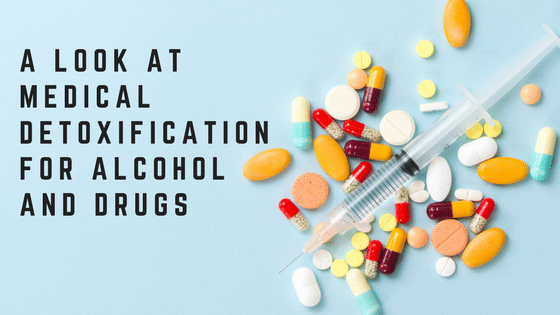The Role of Alcohol Detoxification in Handling Withdrawal Symptoms Efficiently
Navigating the troubled trip to sobriety can be difficult, with alcohol withdrawal symptoms posturing a considerable difficulty. The duty of alcohol detoxification in this procedure is critical, offering a medically monitored environment for safe alcohol elimination and sign management.
Recognizing Alcohol Withdrawal: Signs and Period
What occurs when a persistent enthusiast instantly quits consuming alcohol? The body, lengthy familiar with the depressant results of alcohol, experiences a rebound impact recognized as withdrawal. Signs and symptoms can differ from mild to serious, generally showing up within 8 hours of the last drink, coming to a head by 24 to 72 hours, and perhaps enduring weeks.
Originally, people might deal with stress and anxiety, restlessness, and insomnia. Physical signs and symptoms such as sweating, fast heart rate, and hand tremors might also take place. As the withdrawal proceeds, signs can escalate to serious confusion, hallucinations, high temperature, and seizures, a problem called ecstasy tremens.

The Idea of Alcohol Detox: A Quick Summary
The concept of alcohol cleansing is a vital part of the healing journey for those dealing with alcohol dependency. The process, while complicated, is crucial in removing the body of alcohol and its harmful results. As we proceed, the significance of this detoxification process in regard to taking care of withdrawal signs and symptoms will certainly be comprehensively reviewed.
While lots of view alcohol detoxing as a simple procedure, it is actually a complicated physical operation that the body undertakes to free itself of hazardous alcohol-related toxins. Alcohol detoxing, therefore, becomes a vital step in the recovery journey. It involves the cautious management of withdrawal signs and symptoms that surface as the body readjusts to the absence of alcohol.
In the world of addiction healing, the value of the alcohol detoxification process often continues to be underappreciated. It makes up the initial action in alcohol dependency therapy, focusing on getting rid of the unsafe substance from the body. When done properly and under clinical guidance, it can mitigate the seriousness of withdrawal signs, lowering the risk of problems.
Exactly How Alcohol Detoxification Aids in Managing Withdrawal Signs
Alcohol cleansing plays a critical role in handling withdrawal signs. It includes the risk-free removal of alcohol from the body, therefore decreasing the physical and mental influences of withdrawal. This procedure aids in creating a stable foundation for succeeding recovery initiatives.
In spite of its prospective risks, cleansing from alcohol can dramatically aid handle and ease withdrawal signs. The body, accustomed to the existence of alcohol, reacts adversely when it is suddenly robbed, leading to withdrawal signs. Alcohol detox aims to lessen these signs and symptoms and prevent potential problems.
While the procedure of cleansing can be tough, it plays an essential duty in handling withdrawal signs and symptoms connected with alcohol cessation. The purpose of cleansing is to securely take care of withdrawal symptoms when somebody quits alcohol consumption alcohol. This procedure can help to lessen the physical impacts of withdrawal, such as drinking, seizures, and hallucinations, by gradually lowering alcohol intake or utilizing drug to control signs.

The Structure of a Reliable Alcohol Detox Program
To make sure a successful recovery, check this the framework of a reliable alcohol detox program ought to be thoroughly made and personalized for each and every person. This means taking into account their alcohol consumption background, degree of addiction, physical wellness, and mental state.
The process usually starts with a detailed evaluation to establish the intensity of the dependency and any type of possible co-occurring disorders. This examination helps in establishing the most ideal therapy navigate to this website plan.
Following, a detoxification procedure is started which is meant to remove alcohol from the body. This stage can be testing because of withdrawal symptoms, but an effective program gives needed support to manage these signs and symptoms and stop relapse.

Ultimately, an effective alcohol detox program need to have a strong aftercare strategy, giving recurring support to stop regression and make certain long-term healing. This all natural strategy is vital in guaranteeing the success of the detoxification program.
The Role of Clinical Guidance in Alcohol Detoxification
Provided the prospective severity of withdrawal signs and symptoms, medical supervision plays an important duty in alcohol detox (Safe alcohol detox programs in Morris County NJ). This procedure commonly includes unpleasant, and sometimes lethal, signs and symptoms such as tremors, hallucinations, and seizures. Clinical workers are equipped to handle these symptoms, utilizing medication to ease discomfort and tracking vital indications to ensure security
Along with physical health and wellness, clinical supervision likewise provides mental assistance. The process of detox can be psychologically draining, cultivating feelings of concern, anxiety, and anxiety. Trained professionals can provide necessary emotional support, helping people manage these feelings effectively.
Finally, clinical guidance aids to manage the risk of complications. Withdrawal can cause severe health and wellness complications, including dehydration and like it heart issues. Physician can recognize these threats early, providing prompt and appropriate intervention.
Conclusion
To conclude, alcohol detoxification is an essential initial step in handling withdrawal symptoms and guiding towards long-term soberness. Through an organized detoxification program and medical guidance, the extent of withdrawal symptoms can be significantly lowered, enhancing convenience and safety for the patient. The supreme objective is to make sure a healthier, alcohol-free life, with recurring assistance needed to maintain soberness and stop relapse.